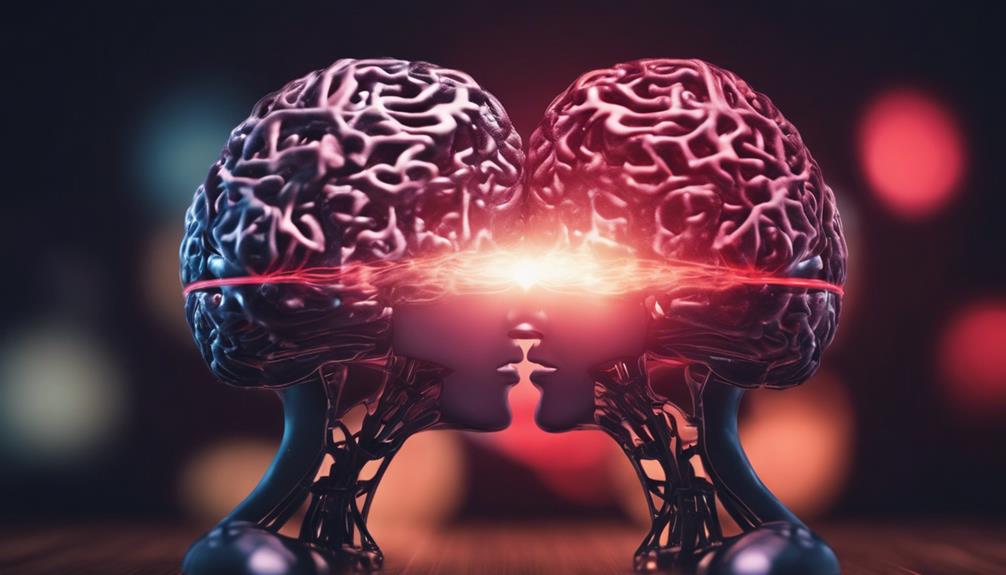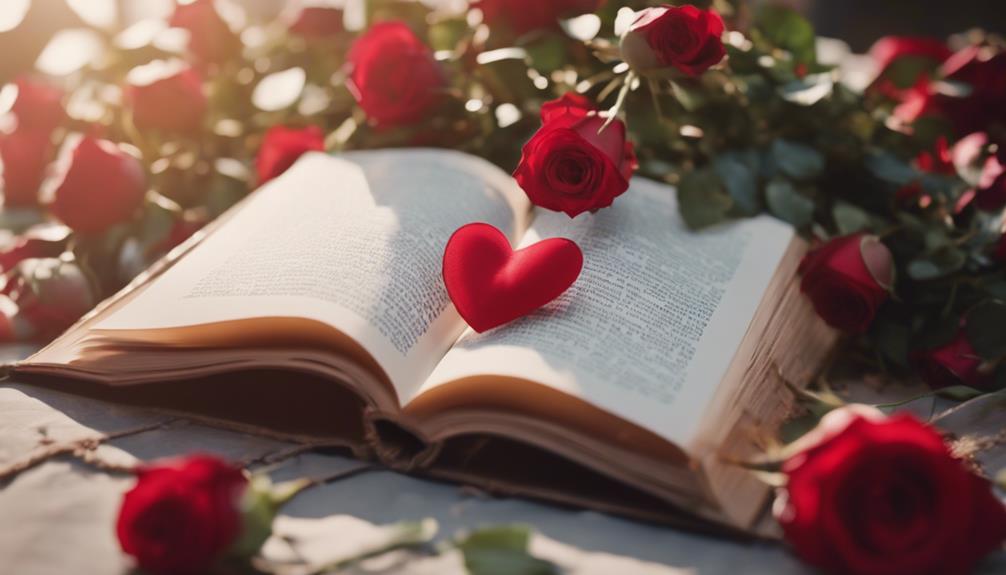
As we navigate the intricate tapestry of cultural influences, one cannot help but ponder the enigmatic role of love, the power of love, in shaping societies. From the fantastical domains of art and literature to the rhythmic beats of music and dance, love weaves its spellbinding magic, leaving an indelible mark on the collective consciousness of humanity. But what lies beneath the surface of this seemingly ubiquitous force? How does love sculpt the very essence of our traditions and beliefs? Join me as we unravel the hidden layers of love’s omnipotent sway over culture, revealing its profound impact on our perceptions, interactions, and ultimately, our shared existence.
Historical Significance of Love
Love, throughout history, has been the invisible force that has shaped civilizations, inspired great deeds, and ignited the flames of passion in the hearts of humanity.
From the epic tales of Antony and Cleopatra to the romantic escapades of Romeo and Juliet, love has driven individuals to both heroic acts and catastrophic downfalls. It has been the muse behind countless poems, songs, and even wars (we all know Helen of Troy’s story).
Love’s historical significance is not just about warm, fuzzy feelings but also about power struggles, alliances, and betrayals. As much as we like to believe in the fairy tale version of love, history shows us that it’s a multifaceted gem with sharp edges and dazzling brilliance.
Love’s Influence on Art
Exemplifying passion and emotion, art throughout history has been deeply intertwined with the intricate nuances of human relationships and connections.
Love’s influence on art is like a tempest in a teapot, stirring up creativity, drama, and heartache in equal measure. From the Renaissance’s amorous depictions to modern abstract expressions of love lost and found, artists have captured the essence of love in its many forms.
The brushstrokes of romance, the sculpted embrace of devotion, and the poetic verses of longing all find their place on the canvas of artistic expression.
Love’s influence on art transcends time and culture, reminding us that the heart’s whispers can be heard through the strokes of a paintbrush or the chisel’s touch on marble.
The Psychology of Love

Delving into the intricate workings of the human mind and emotions, the psychology of interpersonal relationships offers a fascinating insight into the complexities of human behavior. From the inexplicable attraction between two individuals to the rollercoaster of emotions experienced in a romantic relationship, love can be a puzzling phenomenon.
Psychologists attempt to decode the mysteries of love, often finding themselves entangled in the web of conflicting theories and hypotheses. Is it all about chemistry, subconscious desires, or just plain old-fashioned compatibility?
The mind’s labyrinthine pathways when it comes to matters of the heart provide endless fodder for research and contemplation. So, next time you find yourself in the throes of love, remember, it’s not just your heart but your brain too that’s under the spell of this enchanting emotion.
Love in Religion
Within the diverse landscape of religious beliefs and practices, the concept of love permeates through various faith traditions, guiding followers towards compassion, empathy, and spiritual connection. Love in religion often manifests as a deep devotion, an unwavering commitment, or a profound sense of reverence towards a higher power.
From the commandment to love God with all one’s heart, soul, and mind in Christianity to the idea of selfless service and love for all beings in Hinduism, love plays a central role in shaping religious attitudes and behaviors.
Whether expressed through rituals, prayers, or acts of kindness, love in religion serves as a powerful force that unites believers, inspires charitable deeds, and fosters a sense of interconnectedness within the spiritual community.
Love in Literature

Exploring the intricate tapestry of human emotions and relationships, love in literature uncovers a universal thread that resonates across cultures and generations. From the star-crossed lovers in Shakespeare’s ‘Romeo and Juliet’ to the tumultuous relationships in Jane Austen’s novels, love takes center stage in various literary works.
Authors often probe into the complexities of love – its joys, heartaches, and sometimes absurdities. Whether portrayed as a driving force for characters’ actions or as a transformative power, love in literature captures the essence of human experience.
Through poems, plays, and novels, writers have masterfully depicted love’s many facets, leaving readers enchanted, heartbroken, or simply contemplative about the enigmatic nature of this profound emotion.
Love’s Impact on Music
Love’s profound influence on music is akin to a masterful symphony, weaving through melodies and lyrics to touch the depths of human emotion. Love songs have the power to make hearts skip a beat, shed tears of joy or sorrow, and even inspire the most tone-deaf to sing along passionately.
From heart-wrenching ballads to upbeat anthems of love conquering all, music has been the soundtrack to countless love stories, breakups, and everything in between. Artists pour their hearts out, creating harmonies that resonate with listeners on a soulful level.
The universal language of music allows love to transcend barriers, connecting people from all walks of life through shared emotions and experiences. Love and music dance together, creating a rhythm that echoes the heartbeat of humanity.
Dance and Love

Dancing intricately weaves together the language of movement and the rhythm of emotions, embodying the essence of human connection through physical expression.
When it comes to dance and love, one cannot help but notice the intricate steps and twirls that mirror the complexities of relationships. From passionate salsa to graceful ballet, each dance form captures the nuances of love – the highs, the lows, the spins, and the dips.
The synchronized movements reflect the harmony and chemistry shared between partners, akin to the harmony found in a loving relationship. Just like in love, sometimes there are missteps, but the beauty lies in how partners come together again, finding their rhythm and moving as one on the dance floor of life.
LAW OF LOVE
Frequently Asked Questions About The Power of Love
How Has the Concept of Love Evolved Over Different Historical Periods?
Throughout history, the concept of love has undergone a fascinating evolution, adapting to the changing landscapes of human existence.
From ancient times to modern eras, love has morphed from a primal force to a nuanced emotion, reflecting societal values and individual experiences.
As cultures shift and ideologies transform, so does our understanding of love, weaving a complex tapestry of emotions that shape our relationships and influence our worldviews.
What Psychological Factors Contribute to the Experience of Love?
Love, a complex emotion, is influenced by psychological factors like attachment styles, past experiences, beliefs, and self-esteem. Attachment theory suggests that early caregiving shapes our ability to form loving relationships. Past experiences impact our expectations and behaviors in love. Beliefs about love‘s nature and availability affect our interactions. Self-esteem influences our capacity to give and receive love.
Understanding these psychological factors can illuminate the intricacies of the experience of love.
How Do Different Religions Interpret and Express Love Towards God?
Different religions interpret and express love towards God in diverse ways.
From Christianity’s emphasis on loving God with all one’s heart, soul, and mind to Hinduism’s association of love with terms like sneha and priyata, each faith showcases a unique perspective on this profound emotion.
Understanding these varied interpretations can provide insights into the depth of devotion and passion that believers feel towards their divine entities.
What Are Some Common Themes or Symbols of Love in Literature?
Common themes of love in literature often revolve around timeless concepts like unrequited love, tragic love stories, and the transformative power of love. Symbols such as roses, hearts, and Cupid are frequently used to convey deep emotions and romantic connections.
Love triangles, forbidden love, and soulmates are also popular motifs that captivate readers’ imaginations. Through allegorical storytelling, authors beautifully capture the complexities and beauty of love in various forms.
How Has Love Inspired Different Styles or Genres of Music and Dance Throughout History?
Love has been a driving force behind the creation of diverse music and dance styles throughout history. From passionate ballads to energetic dances, love has inspired artists to express a wide range of emotions through their craft.
Whether it’s the sultry rhythms of tango or the heartfelt melodies of a love song, the influence of love on music and dance is undeniable, shaping cultures and touching hearts across the globe.
Conclusion
To sum up, the power of love in shaping culture is profound and enduring. Love has influenced art, literature, music, and even religious practices throughout history. It has the ability to bring people together, transcend boundaries, and create a sense of identity within a culture.
One interesting statistic to note is that 65% of people believe that love is the most important factor in shaping their cultural identity. Love truly has a transformative impact on society and culture as a whole.
Take The Next Step
Mark’s latest book “Spiritual Laws You Must Know” is available on LuLu and on Amazon. Be sure to purchase two copies and give one to a friend, you do reap what you sow!

